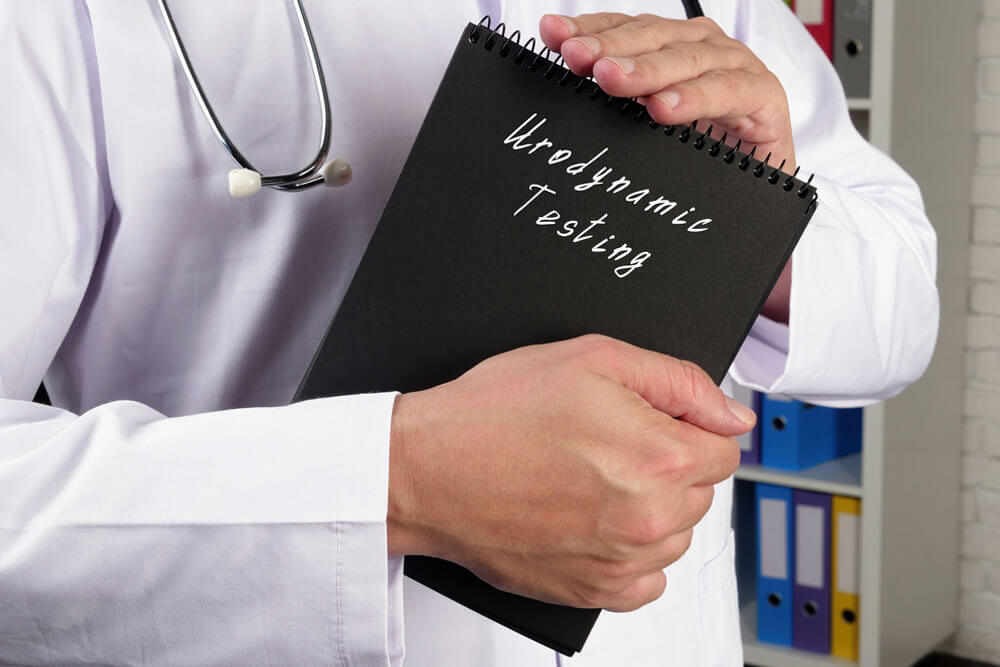What are urodynamics?
Urodynamics is the name given to a number of tests designed to show how your bladder functions. The main test is called cystometry, which measures your bladder’s ability to store and pass urine.
Why are urodynamics performed?
Urinary problems, especially incontinence, may affect women of any age. Problems such as these usually increase with age, pregnancy, childbirth, and the onset of menopause.
Your symptoms may include:
- Loss of urine while coughing, sneezing, laughing, or exercising
- Sudden and/or frequent need to pass urine
- Getting up at night frequently to pass urine
- Difficulty in emptying your bladder
- Recurrent bladder infections
Results from urodynamic tests allow your doctor to demonstrate the reason why you have the symptoms you have, and so offer you the best treatment for your problems.
Are there any alternatives to urodynamics?
Not everyone with bladder symptoms will need to have urodynamics. If simple conservative management such as altering your fluid intake, exercises and/or medicine fails, then urodynamics is the best way that your bladder function can be properly measured and treatment tailored to your particular problem.
Is any preparation required?
You will normally be asked to attend for the tests with a comfortably full bladder, so if possible, do not pass urine in the hour prior to your appointment. The procedure takes approximately 30 minutes and does not require any dieting or fasting. No anesthetic is required. On the day of the test, wear separates (i.e. a skirt or trousers and shirt), as you will need to remove your lower clothing and change into a gown.
Are there any risks?
No matter how carefully the test is performed, urine infections can sometimes occur after it. You should drink more water than usual for a day or two to flush out any bacteria. You may be advised to take tablets of antibiotics for a short period of time after the test to prevent infection.
How is the test performed?
No matter how carefully the test is performed, urine infections can sometimes occur after it. You should drink more water than usual for a day or two to flush out any bacteria. You may be advised to take tablets of antibiotics for a short period of time after the test to prevent infection.
- You may first be asked to do a series of exercises with a full bladder to see how bad your leakage is. This is called a pad test. Don’t worry – you will not be expected to do anything which you are not normally able to do easily.
- You will then be asked to pass urine into a special toilet to measure how quickly your bladder is able to empty. You may have a bladder scan immediately after you have passed urine to assess how well your bladder has emptied.
- Following this, a small plastic tube called a catheter will be inserted into your bladder so it can be filled with fluid. Two fine soft catheters (sensors) will also be inserted, one of them into the bladder and the other into the vagina or rectum. These lines will record pressures measured in your bladder and abdomen.
- During the procedure you will be asked questions about the sensations in your bladder. You will also be asked to do some of the things which might trigger the problem you have (e.g. cough, strain, jog, stand up, or listen to the sound of running water). Let the person doing the test know when your bladder feels full.
- Finally, you will be asked to empty your bladder again, with the two fine sensors still in place. The sensors are then removed and the procedure is complete, and you can get dressed.
What to expect afterwards?
Passing urine may sting a little for a day after the test, but if you think that you have developed a urine infection please let your doctor know. The results of the test are usually available immediately and will be discussed with you so that your treatment can be planned.


